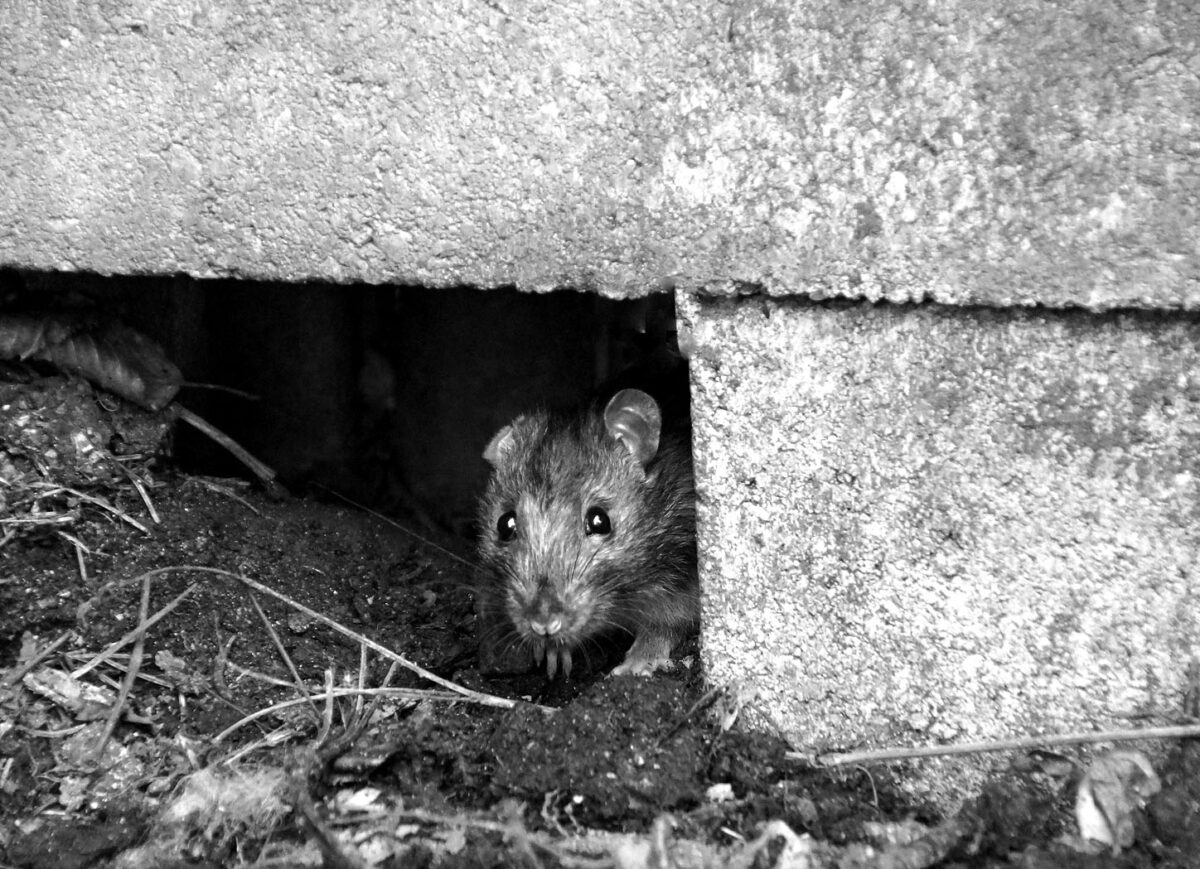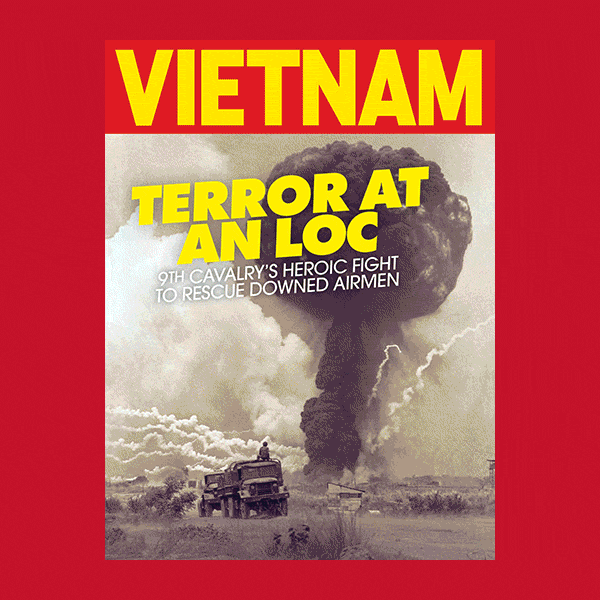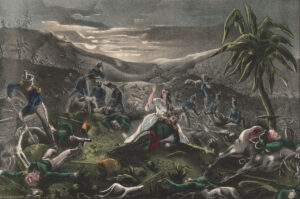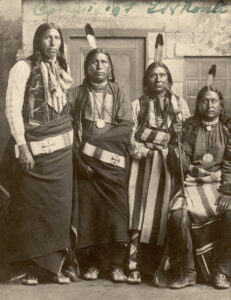Every single night, the enemy attacked our remote firebase in Vietnam in continuous, relentless waves. Fearlessly pressing forward while totally oblivious to their own casualties, they kept on coming. No matter how many of them we killed, more took their places and joined the attacks. These nightly assaults erupted on all sides of us, and no isolated nook or cranny of Fire Support Base Maude was safe from the repeated, fanatical attacks. Wave after wave. Attack after attack. Night after night.
We ruthlessly employed every available weapon in these “close quarter” encounters. We used rifles, pistols, bayonets, machetes, entrenching tools, our 105 mm howitzers’ trail handspikes, makeshift traps—and even our gloved fists and combat boots. In extremis, we grabbed our helmets and swung them mercilessly at the invaders. This combat was always hand-to-hand, quite literally a “tooth and nail” struggle that could only end at dawn’s arrival, when the suicidal enemy finally, grudgingly withdrew to sanctuaries at the base of the hill on which our firebase stood.
Every morning, we formed up in a long, continuous “line abreast” formation and, sweeping across our artillery battery’s position, gathered dozens upon dozens of enemy corpses. Then we unceremoniously tossed their lifeless bodies over our hilltop base’s steep sides and into the deep valley below. No eulogies were ever muttered over the piles of enemy corpses—this was a fight to the death, with no quarter asked or given.
Unlike the Viet Cong and North Vietnamese Army soldiers we faced, this fanatical enemy never entered combat armed with the communist troops’ preferred assault weapons—AK-47 rifles, hand grenades and explosive satchel charges—and they never attacked under a barrage of mortar, artillery or recoilless rifle fire. Instead, they charged mindlessly forward like legions of frenzied animals.
Well, of course they charged like “frenzied animals” since, as those who served in Vietnam will have discerned by now, those nightly attackers were, in fact, animals—massive hordes of huge, voracious creatures of the class Mammalia, order Rodentia, family Muridae, genus Rattus. In short, they were rats.
The Rat Problem
They remain one of the most overlooked and underappreciated among wartime Vietnam’s innumerable animal and insect pests, which include malaria-carrying mosquitoes, poisonous snakes, rabies-infected bats, an occasional wild tiger or two, and disgusting, bloodsucking leeches infesting the waterways. GIs typically encountered mosquitoes, snakes, bats, tigers and leeches only when they were “out in the boonies,” but the persistent, ever-hungry, ubiquitous, nearly ineradicable rats seemed to exist and thrive even in the cleaner, better-maintained rear areas. They were virtually everywhere in Vietnam.
Rats were particularly a major infestation on the long-established firebases at remote locations in the field, usually situated well away from areas where the Vietnamese lived. My (admittedly unscientific) theory is that since the Vietnamese have long included rat meat “on the menu” as a viable, often-preferred source of protein, that dietary addition helped keep the rat numbers reasonably in check in the densely populated areas. Rat meat is reportedly quite flavorful, described by contemporary European food critics and gourmands variously as “resembling pork,” “akin to chicken,” “gamey…with a taste close to rabbit,” and “similar to squirrel” (the latter comparison quite understandable since squirrels, fellow rodents, are just “rats with bushy tails”).
This author will defer to the Vietnamese people and to European food critics regarding the taste of rat meat—although later in the war, when I was an American fire support adviser to South Vietnamese artillery units at Hue Citadel in the northern part of the country, I bravely sampled “dog-meat sparerib BBQ” (not too bad, actually) as a courtesy to my gracious Vietnamese counterpart hosts. I also tried a local delicacy consisting of a huge, deep-dish plate of coagulated chicken blood; it has the consistency of Jell-O served up in pielike slices and a taste that must be similar to licking rusty nails. But rat meat, thankfully, was never offered nor consumed. This may have been a cultural bias, but we Americans never considered cooked rat meat as an option for rodent population control.
How Rats overran The Firebases
Rat infestation, especially on the older firebases, was the direct, inevitable and predictable result of American GIs’ propensity for generating massive amounts of trash and garbage anyplace where they spent more than a few hours. An innovative graduate student or Ph.D. candidate could likely create a winning thesis or dissertation proposal by thoroughly researching and calculating the average pounds of garbage that the typical GI created during a 24-hour period in a combat zone during America’s 20th century wars.
At the long-term American firebases, usually on the summits of steep-sided hilltops, trash, kitchen garbage, empty C-ration cans and other things GIs considered no longer useful were routinely chucked over the firebase’s sides, accumulating in massive piles in the ravines surrounding the position. When I got to Vietnam in late 1971, rotting garbage, decomposing trash and fresh rubbish had been piling up at bases like mine since 1965, providing hordes of rats with the perfect “breeding and feeding” environment.
A single pair of rats can produce as many as 2,000 descendants in one year, and therefore the proliferation of rats in one location is often astonishingly huge. Multiply 2,000 by the number of rat pairs congregating in a firebase’s garbage dumps, then multiply that figure by the progeny of each pair’s equally prolific descendants and finally multiply by the years the firebase has been in existence, and you get an idea of the unbelievably gigantic scope of the problem—and that massive total is just for one base! Although as a West Point cadet I barely managed to squeak through our obligatory and miserable two years of “advanced mathematics,” it doesn’t take a math genius to figure out that the total, countrywide number of those voracious rodents exceeded hundreds of millions, probably a low-end estimate.
Giant Rats
Importantly, these Vietnamese rats were not the small, cuddly lab rats and pet mice familiar to Americans. No, indeed! These large, dark-brown monsters seemed to reach the size of a typical house cat. Even the less-well-fed Mekong Delta “rice rats,” living off the rice paddies in that water-logged region of the country, could weigh as much as 13 pounds, so imagine the size of our “firebase rats” that enjoyed an even more calorie-rich diet.
Sporting razor-sharp incisors that could chew through plastic-coated steel communications wire, chain-link fences and even 1- to 2-inch diameter lead pipes, these monster rats were genuinely the frightening stuff of nightmares.
Think of the horrifying “waves of rats” scene in the claustrophobic Venice catacombs of the 1989 film Indiana Jones and the Last Crusade, or, even more terrifying, the 1971 film Willard, in which legions of predatory rats go on a rampage and eventually devour the main character. I’m talking about those kind of rats!
The Enemy I didn’t Expect
My own stark and dramatic introduction to the overwhelming rat infestation on Vietnam’s firebases occurred in early 1972, ironically, the Chinese “Year of the Rat.” I was still a relative newbie in Vietnam then. I had arrived on Thanksgiving Day in 1971, having left the United States on Nov. 24, my son’s first birthday (which we celebrated a few days before I departed from McChord Air Base at Fort Lewis, Washington). By the end of 1971 President Richard Nixon’s “Vietnamization” of the war was in full swing, shifting major combat operations to South Vietnamese control. Only two U.S. ground combat brigades were still in-country: the 3rd Brigade, 1st Cavalry Division (Airmobile), operating in the area around Saigon, and the 196th Light Infantry Brigade, the Americal Division’s last remaining brigade, in northern South Vietnam. I was sent to the latter.
I had a personal interview in Da Nang with Maj. James Broadus, commander of the 3rd Battalion, 82nd Field Artillery Regiment, 196th Light Infantry Brigade. He was one of the finest officers the U.S. field artillery ever produced. When Broadus asked me what I wanted to do, I immediately replied: “Sir, I want to command an artillery battery as soon as possible!” Thankfully, he agreed.
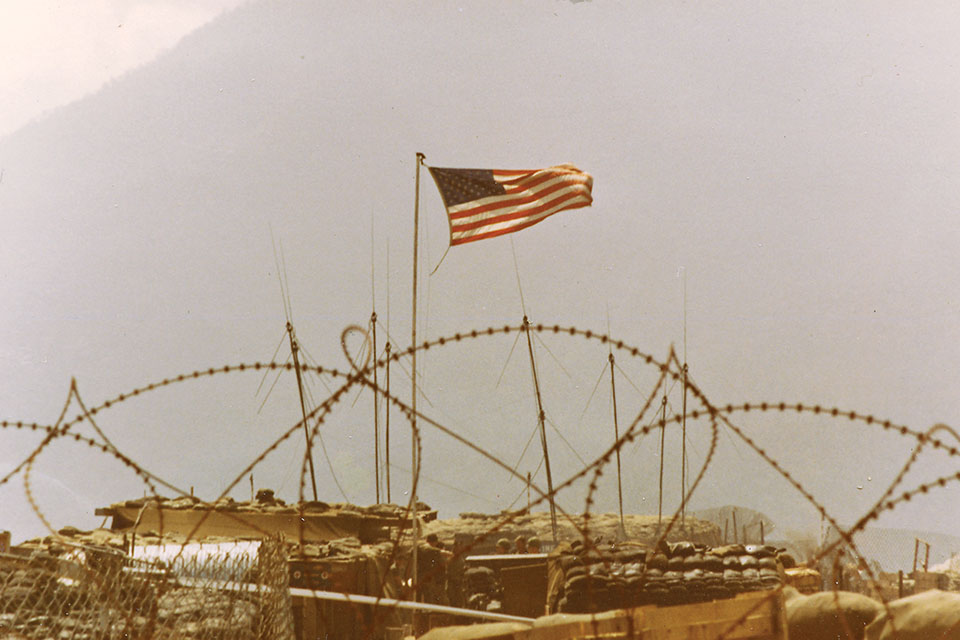
I never dreamed that at this late stage in the war I would have the privilege of commanding a U.S. artillery battery in combat. I was a brand-new captain, just six months in grade and 2½ years from my Army commissioning. For the six weeks before assuming command of a battery, I worked as a battalion assistant operations officer, which gave me time to get acclimated to Vietnam and learn more about serving there.
In January 1972, I took command of the 3rd Battalion’s Charlie Battery, replacing Capt. Jim DeLoach. At that time, the battalion consisted of five batteries—three M102 105 mm howitzer batteries, one battery of M114 155 mm towed howitzers and a combined 8-inch howitzer/175 mm gun battery—positioned on five firebases forming a rough semicircle north, west and south of Da Nang, protecting the city and the vital U.S. Air Force base there. Fire Support Base Maude, aka Hill 350, about 10 miles due west of Da Nang, hosted Charlie Battery, which fired M102 howitzers. On a clear day from the top of FSB Maude, towering above the surrounding flat terrain at 1,000 feet above sea level, one could easily see the South China Sea and all of the environs of South Vietnam’s second-largest city. During monsoon season, FSB Maude usually loomed above the billowy, white layer of clouds that stretched endlessly in every direction. It appeared as though one could walk on top of those clouds all the way to Da Nang. FSB Maude, one of the original Marine firebases, dated back nearly seven years to March 1965. Maude was fortified, entrenched and enclosed by barbed wire. About two-thirds of the base was occupied by a 196th Light Infantry Brigade infantry battalion headquarters and an infantry company. A helicopter landing pad, our only contact with the outside world, was in the middle of the base. The northeastern third contained Charlie Battery, which consisted of four officers and about 80 cannoneers—the rest were in our Da Nang rear area.
A Nighttime Visitor
Living conditions on FSB Maude were, understandably, primitive, with everyone occupying handmade “hootches” consisting of multiple steel culvert halves and dirt-filled, wooden 105 mm ammo boxes covered by several sturdy layers of sandbags. Still it was a step up from spending the night unprotected out in the boonies. The only things that resembled a fixed structure were our battery “fire direction center” (which controlled our artillery fire support for infantry companies in the field) and the field kitchen “mess hall,” the highest and most vulnerable facility on FSB Maude. And even those structures were just sandbagged Conex containers—rectangular 8-by-6-by-6-foot steel shipping containers converted for combat use. Our 105 mm howitzers were in open firing pits, each surrounded by a circular 4-foot-high berm made of sandbag layers. A gun pit contained extra-reinforced, sandbagged ammunition bunkers that gave us immediate access to 105 mm projectiles and their fuzes.
Yet, we did enjoy at least one comfort—a “hot shower.” About the size of a telephone booth, it was made from the remains of a canvas tent stretched over a wooden frame, topped by a 55-gallon drum filled with water heated by a standard, multifuel-burning, GI immersion heater. Compared with the infantry grunts slogging through the surrounding jungle, us artillerymen on FSB Maude had the comforts of home—well, relatively speaking.
Each day, after attending the obligatory morning briefing for the infantry battalion commander in his operations center on the other end of the firebase, we endured a mind-numbing, monotonous and seemingly endless repetition of what GIs referred to as “same-o, same-o.” We had long hours of interminable boredom punctuated by intermittent periods of frantic activity responding to calls for “contact” artillery fire to support the infantry companies’ operations.
Although the living conditions weren’t the best, being in command of an artillery battery was still a dream come true…except there was a dark side.
During my first night as Charlie Battery commander, while asleep on my cot in my sandbagged hootch, I had an unusually vivid dream of a cat sitting on my chest, tickling my face and neck with its whiskers. But I awoke to a nightmarish reality—staring into the beady red eyes of a huge rat on my chest! I reflexively struck out and knocked the creature off me, but that only seemed to annoy it. Hitting the floor, the rat quickly recovered and, as it appeared in my not-quite-fully-awake state, was preparing a counterattack!
I fumbled in the dark in unfamiliar surroundings before finally grabbing my M1911A1 .45-caliber pistol from under my pillow, chambering a round and pointing it toward the monster. Luckily, I woke up enough to realize what was happening—and what could happen! I judiciously flicked on the pistol’s thumb safety.
Had I actually pulled the trigger and fired a heavy .230-grain round from one of the world’s most powerful handguns inside our claustrophobically small sandbagged quarters, I could have endangered my sleeping hootch-mate, who was my battery executive officer, and most likely deafened both of us in the process. My “lesson learned” that night: A .45-caliber pistol is definitely not the weapon of choice for eradicating rats.
Anti-Rat Weapons
Through hard-earned experience, however, we did develop and try out a number of anti-rat weapons, although they were often unsuccessfully employed. Standard rat traps, of the variety familiar in the U.S, proved totally ineffective. Our rats would trigger the traps and get caught, but then simply dragged the mechanism with them as they scurried away. We tried “building a better mousetrap,” as the saying goes. We cut a 1-by-1-foot section of plywood, nailed four large inward-facing rat traps to each corner and then used sturdy communications wire to firmly anchor the device to an immovable object. It seemed like a brilliant solution to our problem—but it didn’t work. When caught in the traps, the rats simply chewed through the commo wire and fled back to their sanctuaries, taking the traps with them, to stage another assault the next night.
Through trial and error, we eventually discovered one of the most effective means of killing the monsters—“soap bullets.” We took a 5.56 mm M16 rifle round and removed its full metal jacket projectile. Then we inserted the business end into a bar of soap. When we pulled it out, the round was full of a solid block of waxlike soap. When triggered, the powder charge propelled the soap bullet with enough force to kill a rat without endangering nearby GIs. But like other methods, this one also proved to have a corresponding downside: A soldier would inevitably lose track of how many soap bullets he had loaded—“pop, pop, pop, BLAM!” The latter jacketed bullet would ricochet around the small hootch as everyone leapt for cover. Obviously, even that was too dangerous a solution to the rat problem.
A fortuitous accident in late February 1972 revealed a better solution. When a CH-47 helicopter was lifting our “water buffalo”—a two-wheeled, 845-gallon G527 water carrier— static electricity accidentally set off one of the fougasse explosives (similar to napalm) planted all around our firebase for close-in defense. The fougasse, a mixture of diesel and gasoline in a 55-gallon drum wrapped in detonating cord and primed with C4 plastic explosive, burst into a massive blast of flame and oily smoke that towered over our firebase and practically engulfed our mess hall Conex. But the upside of this nearly disastrous explosion was that thousands of rats were instantly incinerated, and thousands more fled from the trash heap into the jungle to escape the raging inferno. “Great!” we thought. “Burn, you rat bastards!”
In a final irony, one of the last movies we played on FSB Maude was, no kidding, Willard. Naturally, given GIs’ notoriously morbid sense of humor, we enthusiastically cheered for the rats. “This must have been filmed on Maude, right?” one of the GIs quipped. Rats continued to annoy us during our remaining time at the firebase, but we periodically—and more judiciously—applied the proven fougasse treatment, incinerating the rotting trash dumps.
When the last U.S. ground troops evacuated the Da Nang area in August 1972, even the most math-challenged observers could confidently predict that our very prolific rat enemies would reoccupy America’s abandoned positions and eventually prevail. Much like our VC and NVA enemies, all our rodent nemesis needed to do was simply to outlast us.

